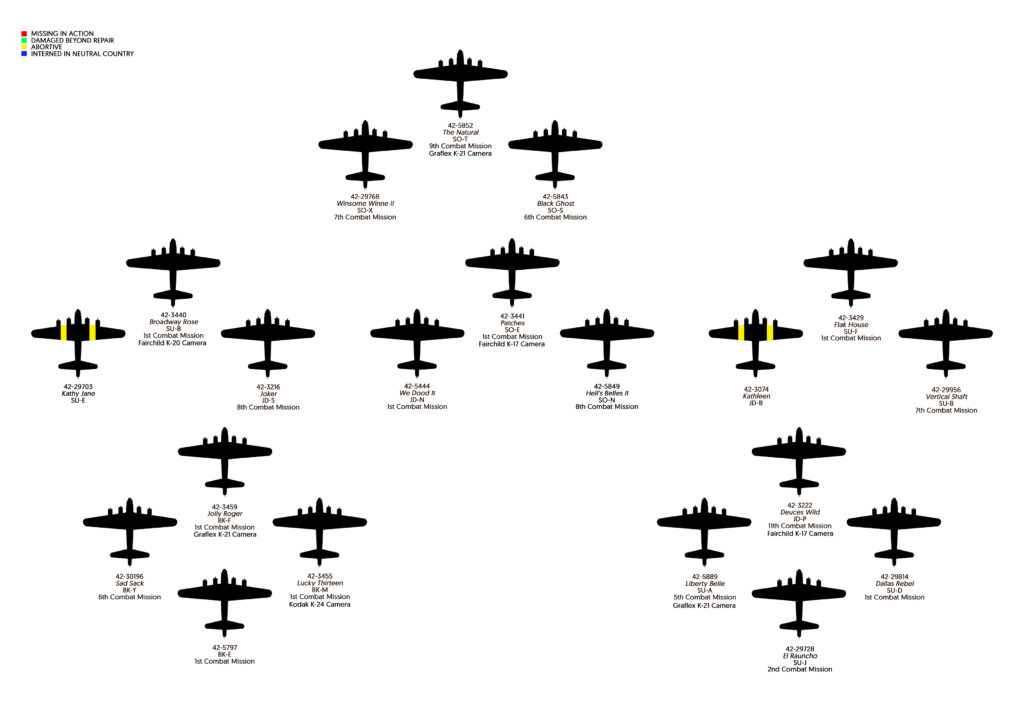With each anniversary, we would like to review her combat operations in real time.
So, here goes…
15 August 1943
VIII BC No. 82
Ramrod 202
384BG No. 15
The US 8AF launches 327 Boeing B-17s, escorted by 187 Republic P-47s equipped with 75 gal belly tanks, against the airfields of Amiens-Glisy, Lille-Seclin, Merville-Calonne, Poé-d’Picardie, and Vitry-en-Artois, France, as well as Vlissingen, in the Netherlands. Additional escort is provided by RAF 11 Group. The 384BG launches twenty aircraft this day, the group being led by CO 384BG COL Bud J. Peaslee aboard The Natural (42-5852). Lucky Thirteen flies in the low squadron as the second element deputy lead.
This strike is the first phase of Operation STARKEY, itself the aerial component of Operation COCKADE. With the TRIDENT conference having secured an Allied invasion of France for summer 1944, COCKADE hopes to deceive the Axis into believing a landing at the Pas de Calais is imminent.
The 384BG’s aircraft are loaded with 24 AN-M30 100lb GP bombs each, the idea being to drop half of their load on Amiens-Glisy and the other half on Poé-d’Picardie. Due to a long turn at the IP, the bomb run against Amiens-Glisy is shorter than expected, resulting in the lead squadron holding its bombs. While the other two squadrons – Lucky Thirteen included – drop half their loads anyway, the strike against Poé-d’Picardie goes exactly as planned.
| Bombers Launched: | 327 |
| Bombers Effective: | 290 |
| Fighters Launched: | 187 |
| Bombers MIA: | 2 |
| Bombers Abort: | 37 |
| Abort Rate: | 11% |
| Loss Rate: | 1% |
| E/A Destroyed: | 4 |
*Please note that the numbers above come from official US and German sources as victory claims cannot be relied upon. The numbers above do not account for RAF statistics.
The RAF loses a single Supermarine Spitfire on escort duty this day.

The crew of the The Natural (42-5852) – the 384BG’s lead bomber this day – upon their return.
Back row (left to right):
1LT Herman Wollenweber, Jr. (Tail)
1LT Edward J. Knowling (Navigator)
CPT Joseph W. Baggs (Bombardier)
COL Budd J. Peaslee (CO 384BG)
CPT J. Ray Martin-Vegue (Group Navigator)
1LT Johnny A. Butler (Pilot)
Front Row:
SSGT Burnia Martin (Waist)
TSGT Preston A. Davis (Radio)
SSGT H. Joe Turlington (Engineer)
SSGT Marion C. Rogers (Waist)
SSGT Robert E. Ralph (Ball)
Note how late the picture was taken – the strike of 15 August 1943 was launched unusually late in the day due to the target’s close proximity. Also note how the camouflage demarcation line follows the rivet seam – a characteristic of Douglas and Vega built aircraft (of which this is the latter).
This crew is later lost on 16 September 1943 with Marion Rogers being killed in action.
The 384BG’s formation chart from this day.
Kathy Jane (42-29703) aborts due to the magazine cover coming off her ball turret and dumping its ammunition. Stella (42-29651) is launched to take her place but fails to rejoin the formation in time. The ball turret gunner aboard Kathy Jane is held responsible for failing to check his position prior to takeoff.
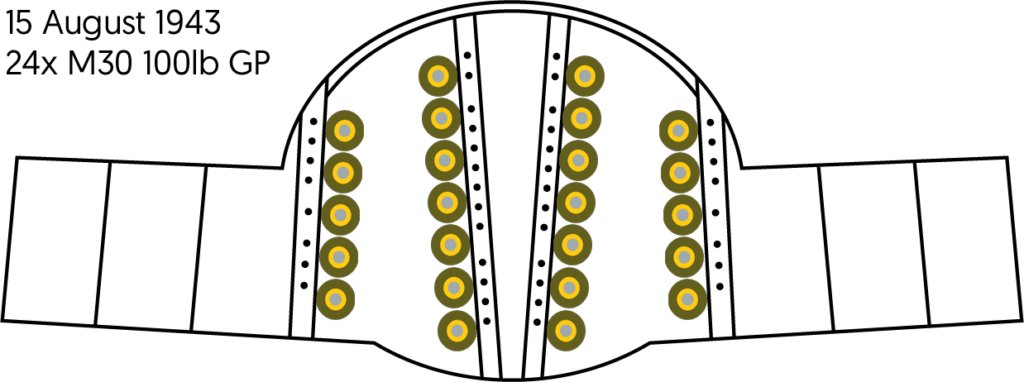
Lucky Thirteen‘s bombload for 15 August 1943.
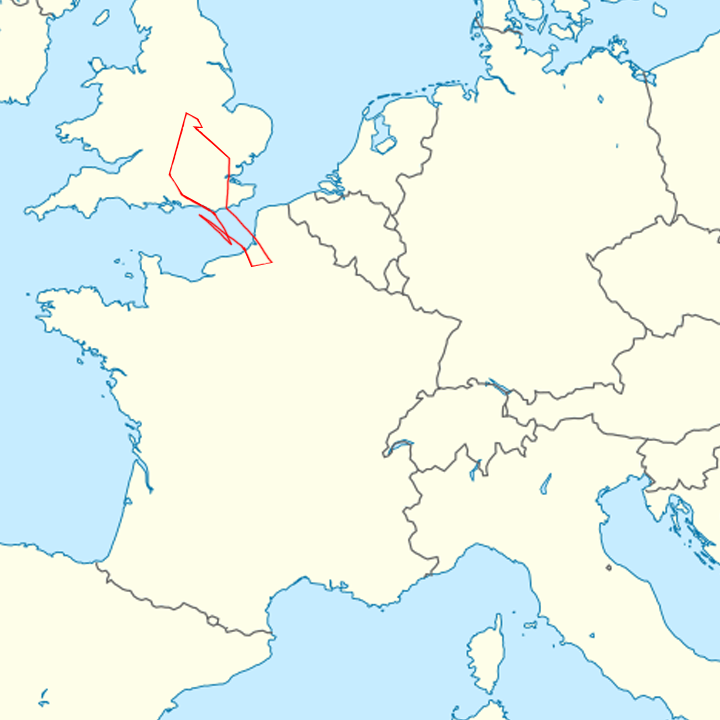
The 384BG’s strike route for 15 August 1943. The target was bombed from an altitude of 23,000 ft. Average temperature was -23 degrees.
All times in PM.
| Engine Start: | 4:25 |
| Taxi: | 4:40 |
| Takeoff: | 4:55 |
| Feet Wet: | 6:26 |
| Feet Dry: | 7:14 |
| IP: | 7:20 |
| Target I: | 7:24 |
| Target II: | 7:28 |
| Feet Wet: | 7:48 |
| Home: | 8:31 |
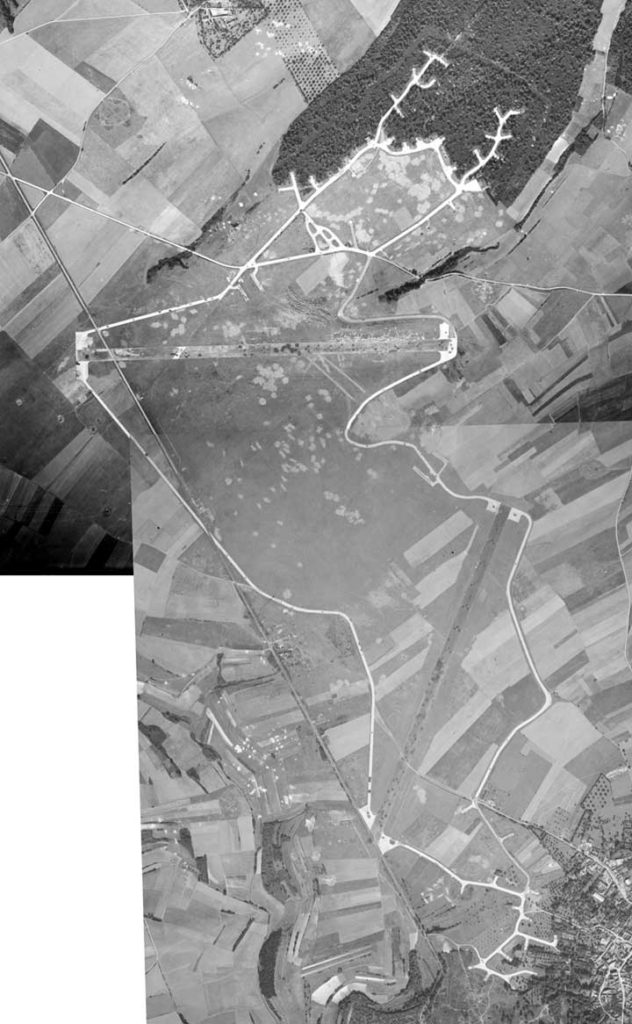
A photo taken by the National Institute of Geographic and Forest Information in 1947 of the Poé-d’Picardie airfield. The airfield has been plowed up and is now largely nonexistent.
This photo was taken facing north. The attack was made at 72 degrees, which roughly translates as left-to-right in this photo.
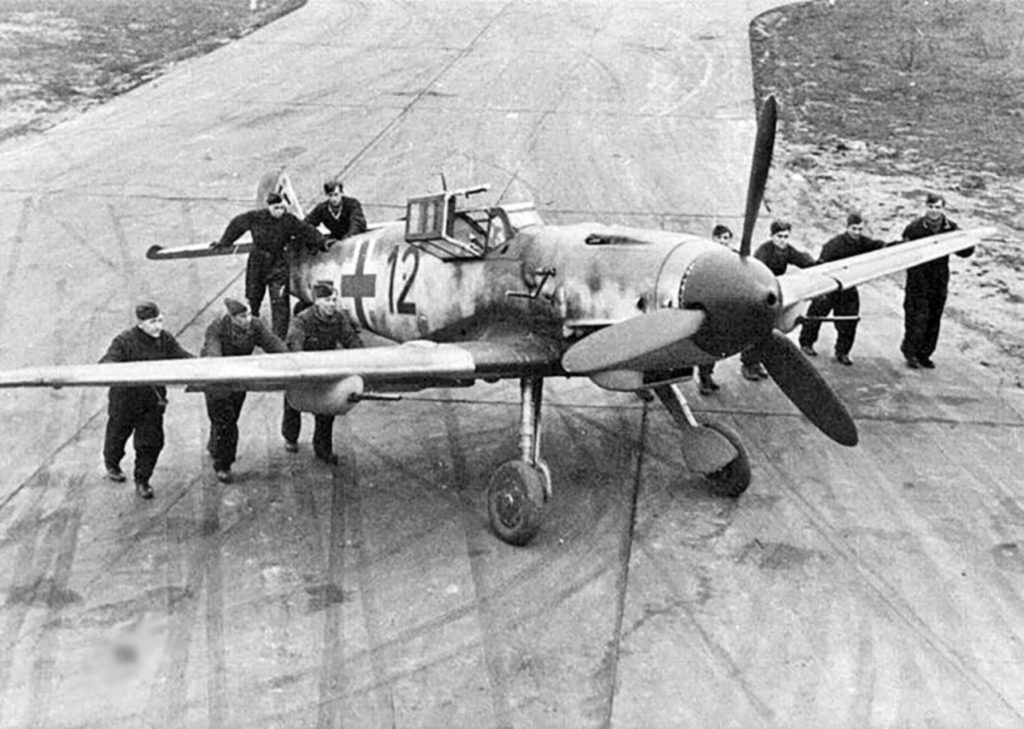
Bf-109G-6 “Schwarze 12” (27083) of II/JG2 at the Poé-d’Picardie airfield. Note the additional MG151 20mm autocannon and armor plate around the canopy – modifications intended to aid in bomber interception. The aircraft and its pilot, Uffz Heinz Hünig, were lost on 20 October 1943. Hünig did not survive.
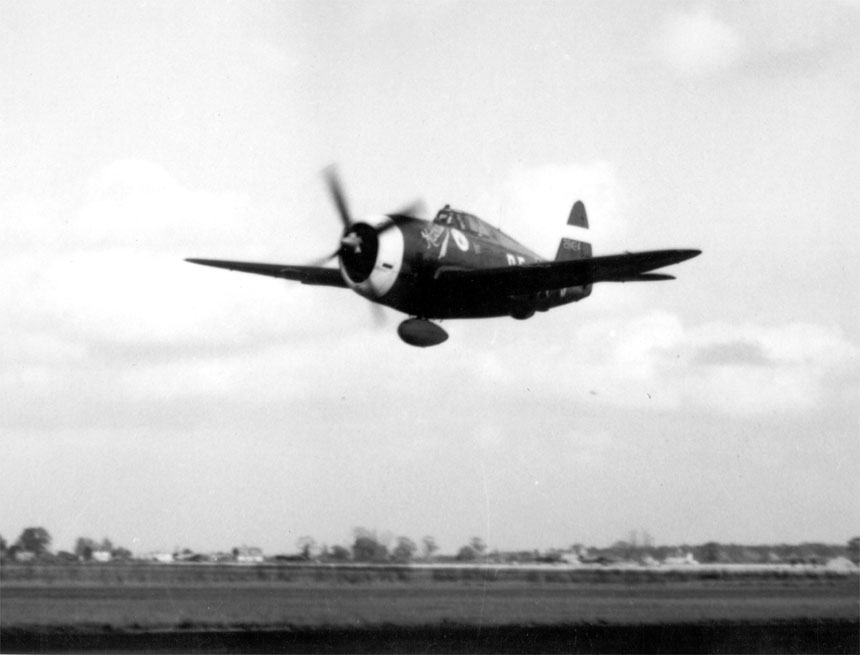
Republic P-47D Kathie (42-8424, 487FG), piloted by 1LT William D. Schwenke, Jr., flies by with a 75 gal droptank on its belly.
Based on the Curtiss P-40’s belly tank, it took time to alter the design to function at high altitude, with the first combat use of pressurized droptanks not occurring until 12 August 1943. Part of the problem was labor union strikes, as some 3,752 occurred throughout 1943, hampering steel production enough that the US 8AF turned to Great Britain to supplement droptank production.
Schwenke and his aircraft were lost on 11 March 1944 after an engine failure over the English Channel. Schwenke did not survive.

